As a "recovering patent lawyer," I now realize that I wasted a whole lot of my clients' money over the years because of the inherent inefficiencies that have been built into patent practice. In this regard, I wrote about the money wasted by old fashioned patent filing systems in this post a while back, a fact which I think dictates that clients insist that their lawyers adopt electronic filing systems. I have also written about the money wasted as a result of the inability of many clients to judge the value provided by their patent lawyers, which I believe is a result of information asymmetry. Another waste of money comes from the time needed to review patent filings during the drafting process. The highly technical nature of patent application and claim drafting requires detailed review of an application on multiple occasions prior to filing. Each review requires the time
Clients Save Money and Get Better Patents When Attorneys Use This Solution
Read This to Become a Better Patent Attorney or Agent (Crosspost from GameTime IP Blog)
(Editorial note: My friend Patrick Anderson, proprietor of the great GameTime IP blog, recently met someone who wrote the Don't File a Patent book. As a patent attorney, Patrick was greatly affected by what inventor John Smith--yes, his real name--experienced in his journey in obtaining and enforcing his patent and trademark rights. While most of us would probably not agree with Mr. Smith's apparent blanket advice to inventors that a patent is never the right course to take, his negative viewpoint can be instructive to those of us who want to better understand our client's objectives to create greater business value for them. Very often the relationship between those who toil in the "foxholes" of the patent world do not stop and think about the expectations and desires of those for whom they are working so diligently. For solo inventors and small companies, investment
False Patent Marking Lawsuit Update: A Tale of Successful Defense Strategy
In November, 2010, I wrote a blog post where I talked about a client who was sued for false marking, even though they had months before the suit changed the packaging of their product. We subsequently obtained a good result with our litigation strategy, and I think others may benefit from this experience. Moreover, I think it is important for we lawyers to share strategies for the overall benefit of our respective clients. This is not done enough: we legal experts all-too-frequently provide sagely advice from the comfort of our own siloed client experiences. For the past 3 years as a blogger, I have been working to build a more public dialogue on IP strategy, and did not want to let this opportunity go by to let others know of a successful strategy in dealing with a false marking litigation. (I feel comfortable sharing my experiences with this litigation,
Patent “Expert” Opinion on Reasons for Google Tender Offer for Groupon Reveals Fundamental Problems with IP Professionals
After several years of writing about how business leaders need to wrest control of their IP matters from lawyers, today brought a revelation that illuminated why this seems to be such a hard point to get across. It should be a no brainer: it has been shown time and time again that when a company aligns its IP strategy with its business strategy, value creation opportunities abound. So, why is it so hard to get business people to sign onto something that is unquestionably in the best interests of their shareholders? It's simple--patent experts wholly lack credibility with business people on these issues. This lack of credibility is compounded by the fact that these experts are given a forum to trumpet these views through use of their firms' large marketing budgets, as well as by haphazard journalists who give them a forum to expound their self-interested views without counterpoint. To this
Business Can’t Hide from False Patent Marking Lawsuits: Here’s How to Predict If You Might be Sued
The take home message: If your company sells a product that bears a patent number, you need to read this post in its entirety. Much has been written in recent months about false marking lawsuits, most of these in the form of "urgent legal alerts" by law firms that calmly deconstruct the appellate court rulings (this one is illustrative). At the end of the day, these articles likely do not look very "urgent" to business people like yourself because most business people do not engage themselves with patent law generally, let alone something as arcane as false marking. So, even though the subject excites us a patent experts, we really cannot expect you to get excited about something that does not seem to affect your ability to conduct business today. However, if your business is a likely target of a false marking lawsuit it will cost you big bucks almost immediately.
An Innovation Expert Sticks Up for IP Lawyers!
Regular readers of this blog know that I strongly believe that IP lawyers can do a whole lot more to better serve the needs of innovation teams. Much of the disconnect between what IP lawyers do and those of their innovation clients can be traced to misalignment of incentives, as well as a structural and cultural impediments that makes it difficult for legal and business experts to communicate and work well together. Last week, along with my good friend Deb Mills-Scofield and Mike Riegsecker of Menasha Packaging, I co-led a workshop on this topic at the 2nd Annual Open Innovation Summit. The workshop was well-attended, and the response was very positive. Also, it appears that my message got through to at least one attendee, who is a prominent innovation consultant. Keven McFarthing of Innovation Fixer wrote this post in which he asks open innovation professionals to not just
IP Lawyers: Enough about Bilski Already! Instead, Start Spending Time on Things that Create Value for Your Clients
Clear your calendars! Bilski was decided just a few weeks ago, and already the schedule is filled with at least 3 Lunch and Learn seminars in the Atlanta area about "what Bilski means to your practice." If you can't make these due to your Summer vacation schedule, don't worry: there are countless blog posts and "Urgent Practice Alerts" available, each of which reviews, abstracts and analyzes the case and its minutiae. Come on Folks: at the end of the day (and after 70 + obtuse pages of reading), Bilski was a very narrow ruling. We know what it means, and very few inventors will be affected by the holding. This means that very few attorneys should do much more than read the abstracted case, and then move on. So, why are my IP lawyer peers spending so much time
Have a Pending US Patent Application? There’s Never Been a Better Time to Make a Deal with the Patent Office
The US Patent Office is in a deal-making mood. Really. Ever since Director Kappos told his examiners last Fall that "patent quality does not equal rejection," I have heard many stories about how patent applications that appeared to be stuck in the limbo 0f serial rejections are now being allowed. Those of us who talk about such things online are in agreement that we may be operating in an unprecedented favorable environment of patent allowances. The data bear out this anecdotal evidence: patent issuances are up 35% this year over last year. My sense of what is happening, which has been confirmed by other experienced patent folks to whom I have spoken, the perspective of the Patent Office has changed. The consensus is the U.S. patenting process is much less adversarial today. In recent years, examiners were effectively told by the Patent Office administration that "there needs to
Much Ado About Patent Marking: Why It is So Hard for Corporations to Get It Right and Why False Marking Lawsuits Might be a Good Thing Overall
 It is fairly rare for patents to make hit the radar screen of mainstream news outlets but, recently, there has been much space allotted to the issue of patent mis-marking and lawsuits being brought by third parties for "violation" of the law requiring that products cannot be marked with an incorrect patent number. Indeed, the usually substance-free local paper in my mother's Southwest Florida community reported about the flood of patent mis-marking lawsuits. And, it is no wonder that the undoubtedly arcane issue of patent marking has reached the status of "news" in a small-town paper given the huge number of cases currently pending in the federal courts. It seems as if patent marking litigation may be the new business model for trial lawyers who are
It is fairly rare for patents to make hit the radar screen of mainstream news outlets but, recently, there has been much space allotted to the issue of patent mis-marking and lawsuits being brought by third parties for "violation" of the law requiring that products cannot be marked with an incorrect patent number. Indeed, the usually substance-free local paper in my mother's Southwest Florida community reported about the flood of patent mis-marking lawsuits. And, it is no wonder that the undoubtedly arcane issue of patent marking has reached the status of "news" in a small-town paper given the huge number of cases currently pending in the federal courts. It seems as if patent marking litigation may be the new business model for trial lawyers who are
Guest Poster David Boundy: A Detailed Examination of What the Proposed First to File Legislation Means to Business
(Editorial Note: Last week, I posted my thoughts on the proposed changes to the US patent laws from a first to invent to a first to file system. In response to my post, I received an exceedingly detailed and substantive comment from David Boundy, Vice President, Ass't Gen'l Counsel, Intellectual Property at Cantor, Fitzgerald. (David wanted me to say that this post his personal view, and does not reflect the views of Cantor, Fitzgerald.) David's viewpoint on what the proposed legislation will mean to business deserves a forum, and he has graciously allowed me to post his comment in total on the IP Asset Maximizer Blog. Anyone who works with business to generate patent assets should be concerned about the proposed changes.) About guest poster David Boundy: David Boundy has spent over a decade on Wall Street, first in several of New York's most prominent law


